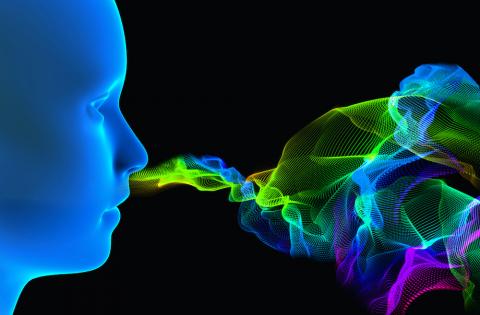
COVID-19 is a disease caused by the severe acute respiratory syndrome Coronavirus 2 (SARS-CoV-2). Symptoms include shortness of breath, cough, aches and fever. In severe cases, COVID-19 can lead to lung damage, cardiac injury and death. Interestingly, extensive anecdotal evidence links COVID-19 to the loss of smell.
For example, in South Korea, where testing has been widespread, about 30% of patients with COVID-19 reported severe olfactory dysfunction. Similar evidence has accumulated in China, Italy, Germany, France and the U.S.
Olfactory dysfunction has also been associated with infection with other corona viruses, including MERS-CoV and SARS-CoV. Patients describe losing their sense of smell even though their noses are clear and not congested. Loss of smell is often accompanied by a diminished sense of taste. In some patients, loss of smell is the only symptom associated with COVID-19.
How does SARS-CoV-2 disrupt olfactory functions?
Despite the relatively short time that SARS-CoV2 has been infecting humans, scientists have already made headway in understanding how the virus might blunt smell.
The human nose is divided into respiratory and olfactory epithelia. The respiratory epithelium is thought to humidify air and is continuous with the epithelium that lines the respiratory tract, the main entry point for the virus during infection. The olfactory epithelium contains the sensory neurons, which detect odor molecules and initiate the perception of smell by transmitting odor-evoked neural activity to the brain. Both epithelia contain multiple cell types with diverse functions, including stem cells that can renew epithelial cell populations throughout life and non-neuronal cells that maintain ion balance and provide structural support.
Thus, the virus could perturb olfactory function in several ways: by directly infecting olfactory sensory neurons and killing them, by infecting other cells in the olfactory epithelium and affecting the function of the sensory neurons indirectly, or by causing inflammation, which in turn alters odor conduction. Understanding the molecular mechanism of virus entry into cells will provide important clues into which cell types and tissues may cause symptoms associated with COVID-19. Recent work from Bob Datta and colleagues at Harvard University Medical School sought to determine the mechanism by which the virus affects the sense of smell.
SARS-CoV-2 entry into cells has recently been reported to rely on two proteins expressed on human cells: ACE2 and TMPRSS2. Datta’s team took advantage of extensive, publicly available RNA sequencing data obtained from mouse, monkey and human respiratory and olfactory epithelia, and analyzed these data to identify cell types expressing the SARS-CoV-2 entry molecules.
They found that ACE2 and TMPRSS2 are indeed expressed in cells in the nose; however, they appear to be absent from the olfactory sensory neurons. Instead, ACE2 and TMPRSS2 are expressed in subpopulations of stem cells and sustentacular support cells.
Importantly, gene expression levels observed in cells in the nose were similar to those observed in cells of the non-nasal respiratory tract. While these results need further validation, they are consistent with the model that SARS-CoV-2 infection causes an acute loss of sustentacular support cells that, in turn, could lead to loss of the sensory neurons.
Further, SARS-CoV-2 infection may also hamper the ability of stem cells to renew the olfactory epithelium. The combined effect on the integrity of the olfactory epithelium could account for the pronounced olfactory dysfunctions observed in COVID-19 patients.
Follow your sense of smell
The American Academy of Otolaryngology, an association of physicians who specialize in diseases of the ears, nose and throat, has recently suggested that the loss of smell should be added to the list of symptoms and screening tools for COVID-19. They further propose that patients with a loss of smell in the absence of other respiratory diseases should self-isolate and test for SARS-CoV-2 infection.
Remarkably, new tools are emerging to monitor one’s sense of smell from home. Labs specializing in human olfaction have adapted previously established smell tests for use during the COVID-19 pandemic. For example, ‘smelltracker,’ created by the Sobel Lab at the Weizmann Institute of Science in Rehovot, Israel, uses an algorithm to detect changes over time in smell perception of household items, such as peanut butter, toothpaste or olive oil. Other attempts at developing easy to use kits for self-testing are also underway. Thus, basic medical research into how we smell could play a role in addressing the enormous medical challenge of SARS-CoV-2 infection and COVID-19.
Gilad Barnea, Ph.D., is the Sidney A. Fox and Dorothea Doctors Fox Associate Professor of Ophthalmology, Visual Sciences, and Neuroscience at Brown University, and the director of the Center for the Neurobiology of Cells and Circuits within the Carney Institute for Brain Science.
Alexander Fleischmann, Ph.D., is the Provost's Associate Professor of Brain Science and Associate Professor of Neuroscience at Brown.